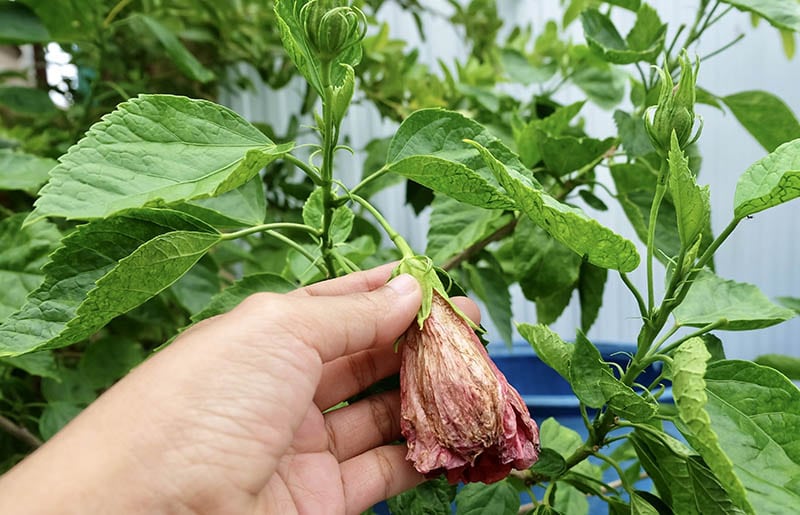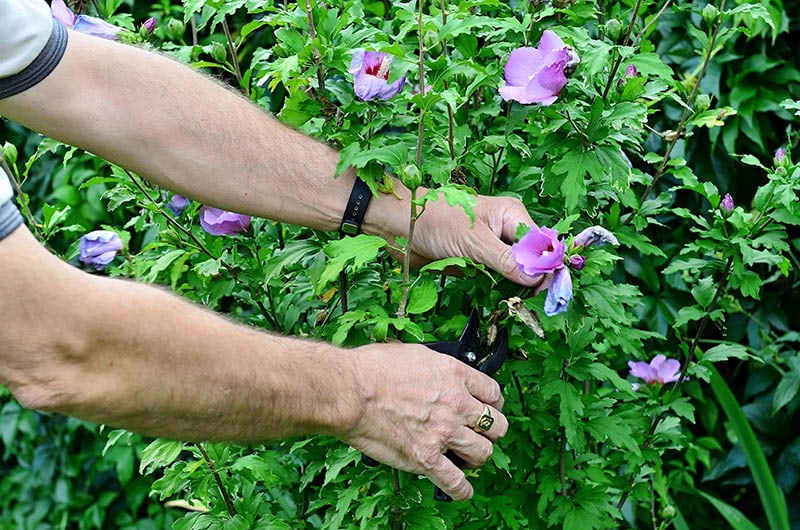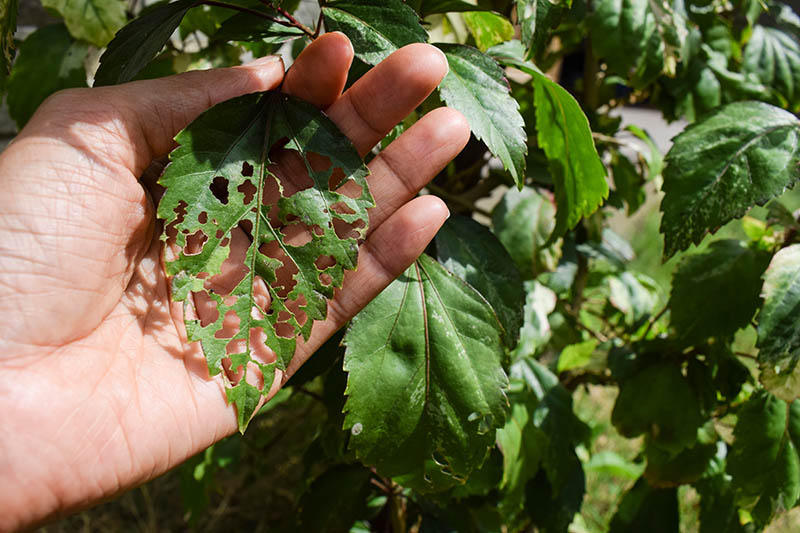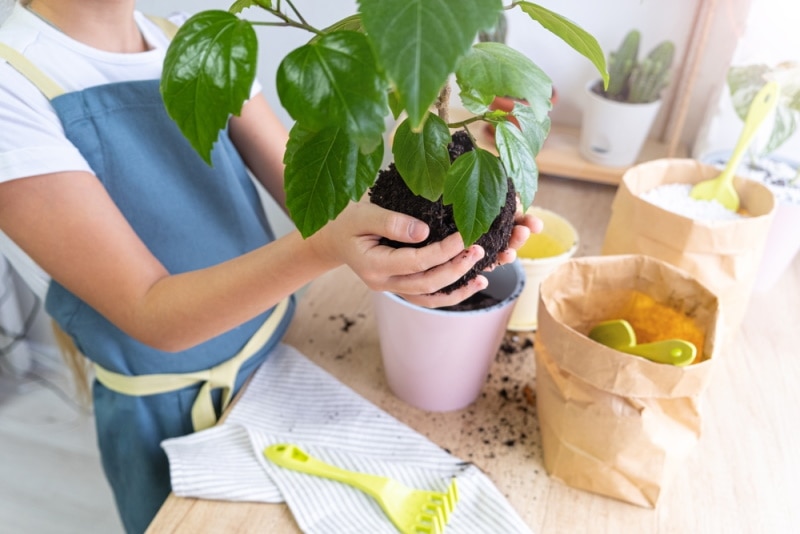Is My Hibiscus Dead or Dormant? (5 Signs to Look For)
-
Ed Malaker
- Last updated:

The hibiscus plant is a wonderful addition to any garden, and it grows well across much of the United States because it can survive harsh winters. However, if you haven’t seen it bloom in a while, you might wonder if it is dormant or dead. If this sounds like your situation, keep reading as we list several signs to look for to help you determine the state of your plant.

The 5 Signs to Check if Your Hibiscus is Dead or Dormant
1. Check for Green
One of the best ways to tell if your hibiscus plant is still alive is to check for green under the bark. To do so, use a sharp knife to carefully scrape away a small part of the top layer of bark on one of the branches. It is likely just dormant if the area looks green and moist. However, if the inside of the branch is brown and dry, it’s likely dead.

2. Bend the Branches
Another great way to see if your hibiscus is still healthy is by gently bending one of the smaller branches. If you bend it and it feels pliable in your fingers and quickly bends back to its original position, there is a good chance that the plant is just dormant. However, if the branch snaps, it might be dead.
3. Examine the Leaves

The leaves of the plant can tell you a great deal about its health. For instance, if all the leaves are brown, it’s likely dead. A living hibiscus will shed its brown leaves, so you shouldn’t see more than a few. If the leaves are yellow, it’s alive, but the soil might be too wet, or the plant needs more nutrients or sunlight.
4. Prune It
Pruning can be a great way to look for new growth in your hibiscus plant. This perennial grows from the roots instead of the stalk, so you must look for buds growing beneath the branches. Cut the plant down to just a few inches after the first frost, and it will likely grow back in the spring. The hibiscus is likely dead if you prune away the branches and don’t see any new growth.
5. Wait Until Spring

In many areas of the country, winters can get quite long, and for months, a dormant hibiscus can look dead and seem like it’s never coming back. However, once spring arrives, you are likely to see the plant come to life, with new leaves and buds appearing. If you don’t see any action by late summer, there is a good chance that your hibiscus is dead.

Frequently Asked Questions
Do I have a tropical or hardy hibiscus?
Tropical hibiscus plants have shiny deep-green leaves, and the hardy hibiscus has dull heart-shaped leaves. The hardy version is popular in the United States because it can tolerate harsh winters and comes back every spring. The tropical plant dies quickly in the cold, so you must replant it yearly.
How can I revive a dying hibiscus?
To revive a dying hibiscus, cut off branches without buds to encourage new growth and focus the plant’s energy. Try to help the plant get at least 5 hours of sunlight each day, and ensure that the soil isn’t getting too much water, which can lead to root rot and yellow leaves.
How can I improve the soil for my hibiscus?
Garden
If your hibiscus plant is frequently becoming waterlogged, you can improve the soil by adding vermiculite or perlite, which will help it drain better. Small pebbles or rocks can also work but might make it harder to work with the soil later. Mixing in dead leaves or grass clippings will also help improve drainage and add nutrients to the soil as they break down.
Pots
If you are growing hibiscus plants in pots, loamy soil works best, and the University of Florida recommends creating your own soil using two parts high-grade unfertilized potting soil, two parts peat moss, and one part perlite.

How much sunlight does my hibiscus need?
Your hibiscus will need 5–6 hours of sunlight each day for optimal growth and a nice bloom, with more sunlight producing more flowers — as long as the ground doesn’t get too hot and dry.
Can I grow hibiscus indoors?
Yes, tropical and hardy versions of the plant will grow better indoors in many parts of the country because it never gets cold enough to kill off the plant or make it go dormant. In this situation, it’s not uncommon for a hibiscus to live more than 40 years.

Summary
If you are growing your hibiscus outdoors and frost occurs, there is a good chance that your hibiscus won’t grow anymore. If it’s a tropical variety, you will need to replant it next spring, but if it’s a hardy variety, it will come back. If you are growing it indoors, you can check to see if it’s still alive by scraping away some of the bark on a stem to see if it’s green and moist, which means it’s dormant. If you bend the branches and they are flexible, it’s also likely dormant. If the branch cracks, the plant could be dead, and you will need to prune it back, looking for new growth to be sure. In most cases, the plant will come back to life in the spring, but if you don’t see any signs of life, it’s likely not coming back.
Featured Image Credit: Arayabandit, Shutterstock
Contents
